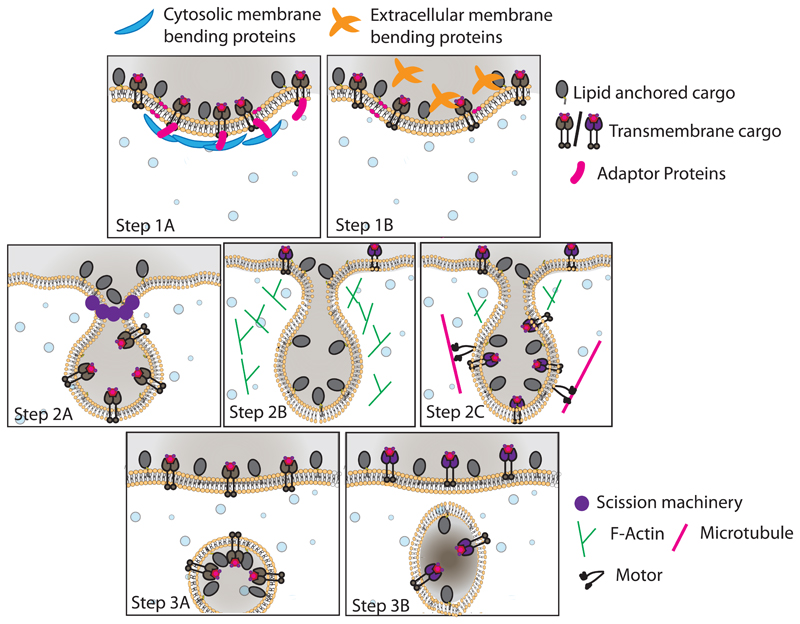Figure 2. Steps in endocytosis.
The process is initiated with cargo selection and their recruitment to the forming endocytic site/pit. The cargo can come from the extracellular milieu or belong to the plasma membrane. Once selected, generation of a budding vesicle connected with the plasma membrane occurs by assembling proteins, which help with the bending and stabilization of the bud (Step 1). These proteins can be coat proteins such as clathrin/caveolin or curvature sensing/stabilization proteins. Regardless of the exact machinery used, it leads to the formation of an endocytic pit/invagination, which is, over time, sculpted to make a neck. The neck is constricted and eventually cut to release the endocytic vesicle inside the cell by a process of vesicle scission (Step 2). Here, most endocytic pathway deploys either dynamin alone (Step 2a) or dynamin in conjugation with actin or motor proteins (Step 2b). There are a class of processes that neither utilizes coat proteins nor requires dynamin for scission (Step 2c). These budding vesicles are then pinched to release an endocytic vesicle into the cell (Step 3).

